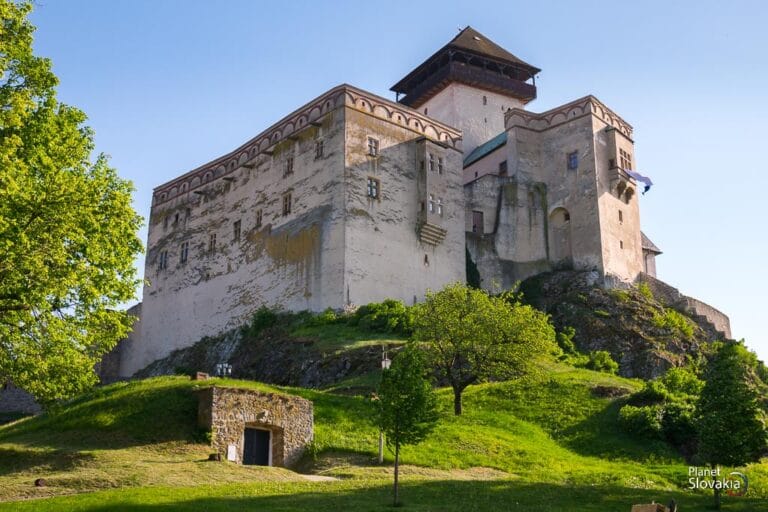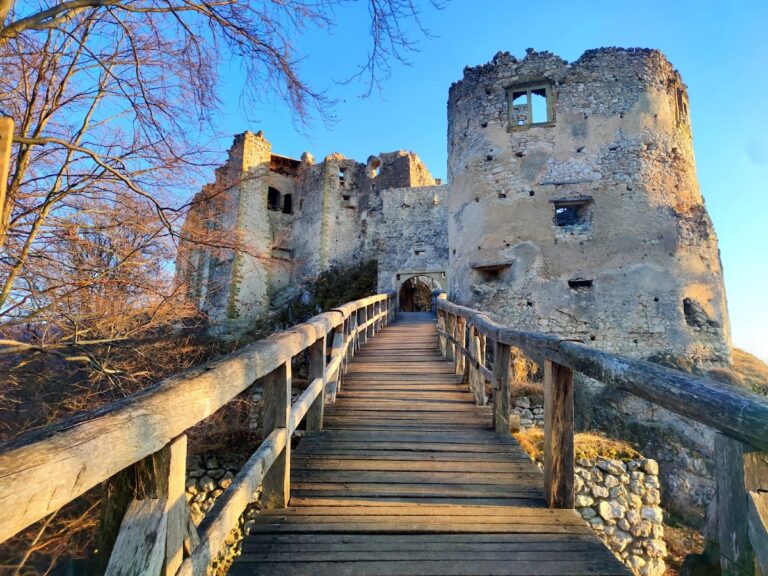Košeca Castle: A Medieval Fortress in Slovakia
Visitor Information
Google Rating: 4.4
Popularity: Low
Google Maps: View on Google Maps
Country: Slovakia
Civilization: Unclassified
Remains: Military
History
Košeca Castle stands near the village of Košecké Podhradie in Slovakia and was built during the medieval era, likely in the 13th century by the local ruling powers of that time. The castle first enters written records in 1312, marking its importance as a stronghold and administrative center for the Košeca estate.
Initially, Košeca Castle belonged to the royal domain, serving as a hub of governance and defense until the late 14th century. In 1397, ownership passed to various noble families over the centuries, including the influential Stiborics and later the Košecký family. These transitions reflected shifting political alliances and the castle’s role within the feudal hierarchy of the region. Throughout the 15th and 16th centuries, the fortress was central to several conflicts and power struggles. Notably, in 1462, King Matthias Corvinus seized Košeca Castle after its owners allied with the military leader Jan Jiskra’s brothers, underscoring the castle’s strategic value.
Following the turbulent period after the Battle of Mohács in 1526, which sparked succession disputes across the Hungarian lands, the castle changed hands among noble houses such as the Zápolya family and later the Petróczy and Ilešházi families. Its importance endured, but as political power consolidated and military technology evolved, Košeca gradually lost its prominence.
In the latter half of the 17th century, during the reign of Emperor Leopold I, the castle was involved in the Wesselényi conspiracy, a plot against Habsburg rule. In 1670, imperial forces under the commander Paul Eszterházy deliberately destroyed the fortress using gunpowder. This marked the end of Košeca Castle as a defensive seat. After its ruin, the nearby town of Košeca took over as the local administrative center, shifting the regional balance of power away from the hilltop fortress.
Remains
The ruins of Košeca Castle occupy a hill around 454 meters above sea level, taking advantage of the natural steep slopes surrounding it, which served as a defensive barrier. This location meant that the builders did not need to create extensive artificial earthworks like ditches or ramparts to protect the site. The castle’s elongated footprint measures about 75 meters in length and 23 meters in width, giving it a narrow and stretched shape.
Evidence suggests the main entrance was situated towards the southern part of the eastern wall, providing access to the fortress. At the southern end of the ruins stands the remains of a large building, which likely functioned as a tower or keep, acting as a strongpoint for defense and residence.
Much of the fortification system survives as collapsed stonework that has blended into the terrain, obscuring parts of the original defensive walls. These fallen masonry sections hint at the castle’s formidable construction but now create irregular terrain contours rather than intact ramparts.
On the northern edge of the courtyard, traces of additional buildings remain visible, showing the location of subsidiary structures within the castle’s cramped interior. Due to space limitations inside the fortified area, agricultural buildings were appended outside the outer walls on the north and southwest sides. This arrangement points to a practical approach where farming activities were conducted close by but beyond the castle’s defensive enclosure.
Today, the ruins are protected as a national cultural monument, preserving this historical site for study and commemoration. The surviving features allow insight into medieval fortress construction adapted to natural topography, yet no decorative inscriptions or artifacts have been recorded at the location.










